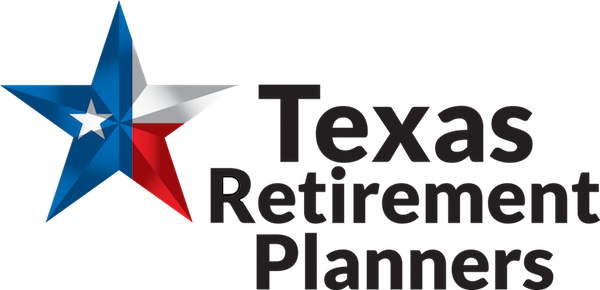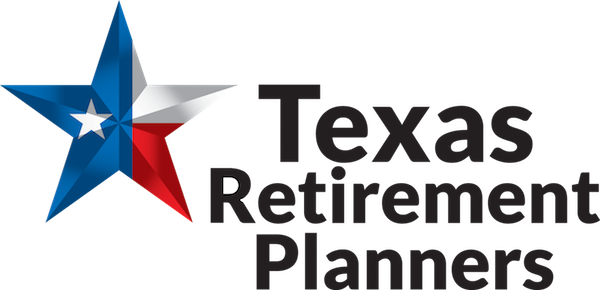Tax Center
Year-End Tax Planning Basics
Nobody wants to pay the government any more in taxes than legally required!
Tax planning means taking advantage of every strategy, deduction, and credit that the taxpayer is entitled to claim, in order to minimize their federal and state tax liabilities. However, the window of opportunity for most tax-saving moves closes on December 31st of each year, so it’s important to evaluate your tax situation now while there’s still time to affect your bottom line for the 2016 tax year.
Timing Is Everything
Consider any opportunities you have to defer income to 2017. For example, you may be able to defer a year-end bonus, or delay the collection of business debts, rents, and payments for services. Doing so may allow you to put off paying tax on the income until next year. If there’s a chance that you’ll be in a lower income tax bracket next year, deferring income could also mean paying less tax on the income. Similarly, consider ways to accelerate deductions into 2016. If you itemize deductions, you can accelerate some deductible expenses like medical expenses, qualifying interest, state income taxes, or local income and property taxes by making payments before year-end. Or, you might consider making next year’s charitable contribution this year instead.
What if You’ll be in a Higher Tax Bracket in 2017?
If you know that you’ll be paying taxes at a higher rate in 2017 (say, for example, that an out-of-work spouse will be reentering the workforce in January), you might take the opposite tack. Consider whether it makes sense to try to accelerate income into 2016, and to postpone deductible expenses until 2017.
Factor in The AMT
Make sure that you factor in the alternative minimum tax (AMT). This “ghost tax” has been around for many years and was originally intended to make wealthy folks pay at least a minimum amount of tax. However, due to the way it was originally structured, more and more individuals are subject to AMT in recent years.
If you’re subject to AMT, certain traditional year-end maneuvers, like accelerating deductions, can have a negative impact on your tax liability. That’s because the AMT–essentially a separate federal income tax system with its own rates and rules–effectively disallows a number of itemized deductions. For example, if you’re subject to the AMT in 2016, prepaying 2017 state and local taxes won’t help your 2016 tax situation and could hurt your 2016 bottom line.
AMT Triggers:
You’re more likely to be subject to AMT if you claim a large number of personal exemptions, have large deductible medical expenses, pay a lot of state and local taxes, or have substantial miscellaneous itemized deductions. Other common triggers include home equity loan interest when proceeds aren’t used to buy, build, or improve your home, and the exercise of incentive stock options.
The Landscape Has Changed For Higher-Income Individuals
Individuals will pay federal income taxes for 2016 based on the same federal income tax rate brackets (10%, 15%, 25%, 28%, 33%, 35%, and 39.6%) that applied for 2015. The same goes for the maximum tax rate that generally applies to long-term capital gains and qualifying dividends (for those in the 10% or 15% marginal income tax brackets, a special 0% rate generally applies; for those in the 25%, 28%, 33%, and 35% brackets, a 15% maximum rate will generally apply). For 2016, the 39.6% federal income tax rate applies if your taxable income exceeds $413,200 if single ($466,950 if married filing jointly, $233,475 if married filing separately, $441,000 if filing as head of household). If your income crosses these thresholds, you’ll also be subject to the 20% maximum tax rate on long-term capital gains and qualifying dividends.
However, you could still pay more in taxes, even if your income doesn’t reach 39.6% tax bracket level. That’s because, if your adjusted gross income (AGI) is more than $259,400 if single ($311,300 if married filing jointly, $155,650 if married filing separately, $285,350 if filing as head of household), your personal and dependency exemptions begin to phase out, and your itemized deductions may be limited.
Also, don’t forget two additional taxes that apply to high-income earners. As your wages exceed $200,000 this year if single ($250,000 if married filing jointly or $125,000 if married filing separately), the hospital insurance (HI) portion of the payroll tax–commonly referred to as the Medicare portion–increases by 0.9%. In addition, the 3.8% Net Investment Income Tax generally applies to some or all of your net investment income if your modified adjusted gross income exceeds those dollar thresholds.
The combined effect of all these taxes and complexities means that high-income earners with substantial investments can pay federal taxes at a marginal tax rate well in excess of 40%!! This makes consulting with a professional tax adviser even more important for these folks.
IRAs and Retirement Plans – A Key Part of Planning
Make sure that you’re taking full advantage of tax-advantaged retirement savings vehicles. Traditional IRAs (assuming that you qualify to make deductible contributions) and employer-sponsored retirement plans, such as 401(k) plans, allow you to contribute funds pretax, reducing your 2016 taxable income. Contributions you make to a Roth IRA (assuming you meet the income requirements) or a Roth 401(k) aren’t deductible, so there’s no tax benefit for 2016, but qualified Roth distributions are tax-free—making these retirement savings vehicles very appealing. For 2016, you can contribute up to $18,000 into a 401(k) plan ($24,000 if you’re age 50 or older), and up to $5,500 to a traditional IRA or Roth IRA ($6,500 if age 50 or older). The window to make 2016 contributions to an employer plan typically closes at the end of the year, while you generally have until the due date of your 2016 federal income tax return to make 2016 IRA contributions.
Required Minimum Distributions:
Once you reach age 70½, you’re generally required to start taking required minimum distributions (RMDs) from traditional IRAs and employer-sponsored retirement plans (special rules apply if you’re still working and participating in your employer’s retirement plan). You have to make the required withdrawals by the date required–the end of the year for most individuals–or a 50% penalty tax applies. In late 2015, Congress made permanent the ability to make qualified charitable contributions of up to $100,000 from an IRA directly to a qualified charity if you’re 70½ or older. Such distributions may be excluded from income and also count toward satisfying any RMDs you would otherwise have to receive from your IRA in 2016.
Big Changes To Note
Mortgage Modifications:
Extended through December 31, 2016, the discharge of indebtedness on your principal residence is excluded from your income. If the debt is discharged after 2016, it’s only excludable from income if you have a signed written agreement in place by December 31, 2016.
Mortgage Insurance Premiums:
The deduction for mortgage insurance premiums as qualified residence interest was extended through 2016. However, this provision expires on December 31st and its deductibility is limited as income rises.
Going Solar:
A credit equal to 30% of the cost of eligible solar energy property placed in service during the year can be taken on the federal tax return, regardless of whether you itemize or take the standard deduction. This covers equipment purchased that uses solar energy to generate electricity, to heat or cool a building, or to provide hot water (but not swimming pool heaters). The credit was extended to construction that begins before January 1, 2022. However, the credit percentage now begins to phase out for construction beginning in 2020, so the window is starting to close on this credit.
Health-Care Reform Penalties:
Generally, you are required to have adequate health-care coverage or face a tax penalty (a number of exceptions apply). In 2016, the penalty increased to $695 per person or 2.5% of income, whichever is higher.
Extended Provisions
A number of key tax provisions, previously set to expire for 2016, were extended, including:
- Increased Internal Revenue Code (IRC) Section 179 expense limits were permanently extended. The expensing limits were also modified affecting which property qualifies and the limits are now indexed for inflation.
- “Bonus” depreciation provisions were extended through 2016 and 2017 at 50% and begin to phase down for 2018 and 2019 (gone after January 1, 2020).
- The 100% exclusion of capital gain on qualified small business stock was permanently extended.
- The above-the-line deduction for qualified higher education expenses was extended, but only until December 31, 2016. The above-the-line deduction up to $250 of out-of-pocket classroom expenses paid by education professionals was permanently extended and will now be indexed for inflation.
- If you itemize deductions, the deduction for state and local sales tax, in lieu of state and local income tax, was permanently extended.
When it comes to year-end tax planning, there’s always a lot to think about. A financial professional can help you evaluate your situation, keep you apprised of any legislative changes, and determine what year-end moves make sense for you.
First Quarter
- If you work for tips and earn more than $20 in tips during the month, report tips to your employer by the 10th of each month for the following month on Form 4070.
- Complete Form W-4 and adjust withholding if needed.
- Pay fourth-quarter estimated tax voucher for the preceding tax year by January 15.
- Evaluate before-tax contributions to retirement plans.
- Evaluate voluntary after-tax contributions to retirement plans.
- Apply for a Social Security number for any child who does not have one.
- Make quarterly defined benefit Keogh contribution for preceding year by January 15.
- If you claimed exemption from withholding last year, you must file a new W-4 form with your employer to claim the exemption for this year.
Second Quarter
- Comply with minimum distribution rules for qualified plans by April 1 if you attained age 70½ in previous year and did not take the distribution by December 31 of that year.
- File your individual tax return (or an application for an extension of time to file) by April 15.
- Pay first-quarter estimated tax, using the correct voucher, by April 15.
- Make your previous-year IRA contribution by April 15.
- Make previous-year Keogh plan contribution by April 15 (unless you applied for an extension of time to file your tax return).
- Make your quarterly defined benefit Keogh contribution for the current year by April 15.
- Pay second-quarter estimated tax voucher by June 15.
Third Quarter
- Make quarterly defined benefit Keogh contribution for the current year by July 15.
- File Form 5500 Annual Report of Employee Benefit Plan by July 31, if applicable.
- Pay third-quarter estimated tax voucher by September 15.
Fourth Quarter
- If you applied for a six-month extension of time to file your preceding year’s tax return, file the return by October 15.
- Make your quarterly defined benefit Keogh contribution for the current year by October 15.
- Begin your year-end planning.
- Evaluate the applicability of the AMT and other taxes.
- Adjust withholding, if necessary.
- Evaluate year-end capital transactions.
- Establish a separate Keogh plan for self-employment income.
- Comply with minimum distribution rules for qualified plans.
Throughout the Year
- Evaluate your tax and financial strategy for receiving discretionary and mandatory retirement plan distributions.
- Re-evaluate your uses of debt.
- Consider making gifts to children or other family members up to the annual gift tax exclusion of $14,000 per gift per donee per year.
- Evaluate passive loss exposure and potential investment shifts.
- If you have excess cash flow, consider how to invest those funds.
- Optimize mix of interest expense items.
- Consider making charitable contributions of property, instead of (or in addition to) giving cash.
- Consider ways to fund your children’s education.
- Evaluate your mix of portfolio and passive income.
- Review prior gifts to children under age 14 and their incomes in order to minimize the amount of income that will be taxed at your rate (the “kiddie tax”).
- Review the selection of your second residence and status of your vacation home.
This material is designed to provide accurate and authoritative information with regard to the subject matter covered. It is made available with the understanding that neither the author nor the publisher is engaged in rendering legal, accounting, or other professional services. If legal advice or other expert assistance is required, the engage the services of a competent professional.
This information is designed to provide a general overview with regard to the subject matter covered and is not state specific. The author, publisher, and host are not providing legal, accounting or specific advice to your situation, either express or implied.
 Richard Becker
Richard Becker Richard Becker
Richard Becker

